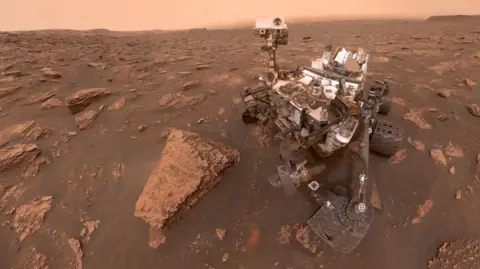**How to Prevent Punctures on the Moon: A Guide to Lunar Tire Development**
As humanity gears up for a new era of lunar exploration through the Artemis program, which aims to return astronauts to the Moon by 2027, engineers and scientists are faced with the challenge of creating reliable transportation systems for the lunar surface. The key to successful exploration lies in a seemingly mundane but crucial aspect: avoiding flat tires, or punctures, particularly on the extremely challenging terrain of the Moon.
**Reinventing the Wheel for Space Exploration**
Space exploration demands the reinvention of conventional technology. The imperative to avoid tire punctures, especially when considering missions to Mars, is a stark reminder of the challenges posed by distant planetary surfaces. Florent Menegaux, the CEO of Michelin, emphasizes that “One thing you cannot have is a puncture.” The striking example of NASA’s Curiosity rover, which suffered significant tire damage just a year after its landing on Mars in 2012, underscores the necessity for durable tires. Its six rigid aluminum wheels showed visible punctures and tears, showcasing the complexities involved in vehicle mobility on rocky extraterrestrial landscapes.
The Artemis program plans to employ a lunar rover, starting with Artemis V in 2030, focusing on exploring the Moon’s south pole, a region rich in potential resources. Unlike the Apollo missions, where astronauts traveled limited distances of approximately 25 miles (40 km) from their landing sites, the goal for Artemis is to cover distances of up to 10,000 kilometers over a decade of operation, requiring significantly more durable wheel technology.
**Engineering Challenges and Innovations**
Dr. Santo Padula, an engineer at NASA’s Glenn Research Center, highlighted that the next generation of lunar missions will not operate for just brief stints; they are expected to have a functional duration spanning decades. The demands of enduring extreme temperatures, particularly at the lunar poles where temperatures can plummet to nearly -230°C, present significant engineering obstacles. Such frigid conditions impede the molecular movement essential for materials to maintain their structural integrity. Dr. Padula elucidates that if tires become permanently deformed, they will not roll efficiently, leading to power loss and operational failures.
Incorporating advanced materials is vital for addressing these challenges. Traditional lunar rover tires, like those used during Apollo missions, were fabricated from zinc-coated piano wire in a woven mesh. However, future tires must leverage stronger materials capable of withstanding both cosmic radiation and temperature extremes. A variety of high-performance plastics, metal alloys, and even innovative materials such as nitinol—a nickel-titanium alloy that possesses unique flexible characteristics—are being explored to yield robust, airless wheels for lunar conditions.
**Innovative Designs and Future Applications**
Bridgestone is approaching lunar tire design through bio-mimicry, borrowing principles from camel feet, where soft, fatty pads help distribute weight and prevent sinking into loose surfaces. Their innovative tire design employs a felt-like material that distributes the lunar module’s weight effectively and has flexible spokes that adjust to the uneven terrain, ensuring improved mobility without becoming stuck.
Currently, both Michelin and Bridgestone are part of consortiums presenting their technological approaches to NASA. The agency is expected to choose a vendor later this year, possibly selecting a singular design or elements from multiple proposals. As evidence of their dedication to developing effective lunar mobility solutions, Michelin is testing their tires on volcanic terrains similar to the Moon’s, while Bridgestone is conducting tests in the sand dunes of Japan.
**Technological Impact on Earth and Beyond**
The innovations stemming from lunar tire technology could transcend space missions, offering substantial advancements in terrestrial applications. Dr. Earl Patrick Cole, for example, is working on the commercialization of NASA technologies, developing high-durability bicycle and motorcycle tires for rough terrains inspired by lunar and Martian requirements. As he envisions contributing to humanity’s return to the Moon, he enthusiastically states, “Daddy’s tyres are up there,” serving as a personal motivation for his contributions to space exploration.
In conclusion, the drive to develop effective, puncture-proof tires for the Moon is at the forefront of engineering innovation. As space agencies prepare for ambitious missions, the intersection between advanced technology and exploration continues to push boundaries, promising not only strides in space travel but also potential breakthroughs for everyday life on Earth.



